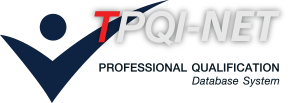หน่วยสมรรถนะ
Inspect, test and troubleshoot aircraft fixed wing flight control systems and components.
สาขาวิชาชีพการบิน
รายละเอียดหน่วยสมรรถนะ
| 1. รหัสหน่วยสมรรถนะ | AVT-XBKI-224A |
| 2. ชื่อหน่วยสมรรถนะ | Inspect, test and troubleshoot aircraft fixed wing flight control systems and components. |
| 3. ทบทวนครั้งที่ | / |
| 4. สร้างใหม่ |
|
ปรับปรุง |
|
| 5. สำหรับชื่ออาชีพและรหัสอาชีพ (Occupational Classification) | |
|
7232 Aircraft engine mechanics and fitters |
|
| 6. คำอธิบายหน่วยสมรรถนะ (Description of Unit of Competency) | |
| This unit of competency requires the application of manual skills and the use of maintenance publications and knowledge of systems theory to inspect, test and troubleshoot system components for flight control fixed-wing aircraft during the performance scheduled maintenance or unscheduled. Maintenance can be done individually or as part of a team. | |
| 7. สำหรับระดับคุณวุฒิ |
| 1 | 2 | 3 | 4 | 5 | 6 | 7 | 8 |
|---|---|---|---|---|---|---|---|
| 8. กลุ่มอาชีพ (Sector) | |
| 10 Aircraft Mechanics | |
| 9. ชื่ออาชีพและรหัสอาชีพอื่นที่หน่วยสมรรถนะนี้สามารถใช้ได้ (ถ้ามี) | |
| 101 Aircraft Maintenance: Airplane | |
| 10. ข้อกำหนดหรือกฎระเบียบที่เกี่ยวข้อง (Licensing or Regulation Related) (ถ้ามี) | |
| ICAO Doc 7192 / EASA Part 66 | |
| 11. สมรรถนะย่อยและเกณฑ์การปฏิบัติงาน (Elements and Performance Criteria) |
| หน่วยสมรรถนะย่อย (EOC) | เกณฑ์ในการปฏิบัติงาน (Performance Criteria) | รหัส PC (ตามเล่มมาตรฐาน) |
รหัส PC (จากระบบ) |
|---|---|---|---|
| 101406.01 Inspect and test fixed wing flight control systems and components. |
101406.01.01 The flight control systems and fixed wing components are visually or physically checked for signs of defects in accordance with the maintenance manual applicable to observe all safety requirements (WHS) and the relevant occupational health. |
101406.01.01 | 199336 |
| 101406.01 Inspect and test fixed wing flight control systems and components. |
101406.01.02 Developed controls of the aircraft and the system are prepared in accordance with the maintenance manual for the application of electrical and hydraulic power, and the system is functionally tested in accordance with the applicable maintenance manual for malfunctions or evidence of incorrect rigging. |
101406.01.02 | 199337 |
| 101406.02 Prepare and troubleshoot fixed wing flight control systems. |
101406.02.01 Relevant maintenance documentation and modification status, including system defect reports, where relevant, are interpreted to identify an unserviceability. |
101406.02.01 | 199338 |
| 101406.02 Prepare and troubleshoot fixed wing flight control systems. |
101406.02.02 Fixed wing system failures are flight control and causes of failures are clearly identified and recorded properly in the maintenance documentation, fault rectification requirements are determined to assist in planning the repair. |
101406.02.02 | 199339 |
| 12. ความรู้และทักษะก่อนหน้าที่จำเป็น (Pre-requisite Skill & Knowledge) | |
|
101316 Remove and install aircraft fixed wing flight control system components |
|
| 13. ทักษะและความรู้ที่ต้องการ (Required Skills and Knowledge) | |
|
(ก) ความต้องการด้านทักษะ See Appendix A (ข) ความต้องการด้านความรู้ See Appendix A |
|
| 14. หลักฐานที่ต้องการ (Evidence Guide) | |
|
(a) Performance Evidence The underlying skills inherent to this unit must be transferable through a series of inspections, testing and troubleshooting applications (including the appropriate involvement of supervisors or other trades) associated with flight systems fixed wing aircraft. It is essential that the test procedures take into account all safety precautions associated with the operation of the flight control system, particularly when / switching interfaces with other systems operating system are maintained, and demonstrated an awareness of double inspection requirements associated with working in the flight controls and systems. Ability to interpret system performance specifications (allowable limits) and apply them in practice is critical and will be demonstrated by applying the full range of systems listed in the Terms evaluation. (c) Assessment recommendation |
|
| 15. ขอบเขต (Range Statement) | |||||||
|
(a) Recommendation
(b) Description
|
|||||||
| 16. หน่วยสมรรถนะร่วม (ถ้ามี) | |
| N/A | |
| 17. อุตสาหกรรมร่วม/กลุ่มอาชีพร่วม (ถ้ามี) | |
| N/A | |
| 18. รายละเอียดกระบวนการและวิธีการประเมิน (Assessment Description and Procedure) | |
|
The assessment are based on combination of paper exams, interviewing, and practical demonstrations depending on the assessors’ judgement.Competition should be assessed in the workplace or simulated work environment, using tools and equipment specified in the aircraft maintenance manual. It is also expected that general purpose tools, test and ground support equipment applicable in most routine situations would be used where appropriate. |
|
